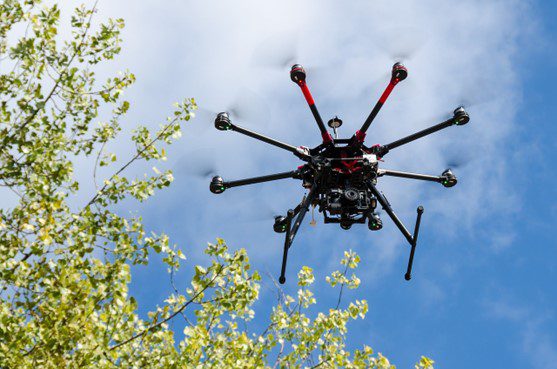
Search and rescue drones have revolutionized the way emergency responders locate and rescue missing people. By combining cutting-edge technology with the latest in search and rescue techniques, drones have made it easier than ever for search and rescue teams to quickly and safely locate people in danger. In this article, we’ll take a look at the benefits of search and rescue drones, how they work, different types of search and rescue drones, and the best practices for using them.
Introduction to Search and Rescue Drones
Search and rescue drones, or unmanned aerial vehicles (UAVs), are becoming increasingly popular in the world of emergency response. These drones are small, lightweight, and capable of flying autonomously in areas that are difficult or impossible to reach with traditional search and rescue methods. They can also be equipped with cameras, sensors, and other technology to help search and rescue teams locate missing people in difficult terrain.
The use of search and rescue drones has grown exponentially in the last few years. In 2015, the United States Federal Aviation Administration (FAA) approved the use of drones for search and rescue missions, and since then, more and more search and rescue teams have been relying on drones to help locate missing individuals.
The Benefits of Search and Rescue Drones
Search and rescue drones offer a number of benefits over traditional search and rescue methods. First and foremost, they’re able to access areas that are otherwise inaccessible to human rescuers. With the help of drones, search and rescue teams can explore dangerous terrain, search in deep ravines, and even fly into disaster zones that have been hit by natural disasters.
Another benefit of search and rescue drones is that they’re able to cover more ground in less time. Drones are able to fly quickly and cover large areas in a single flight, allowing search and rescue teams to quickly locate people in need of help.
Finally, search and rescue drones are also cost-efficient. Traditional search and rescue methods require a lot of manpower and resources, but with drones, teams can save time and money by using fewer resources.
How Search and Rescue Drones Work
Search and rescue drones are typically operated by a team of professionals, such as remote pilots, search and rescue operators, and technicians. The team will use a variety of tools and techniques to control the drone, including ground control stations and remote control systems.
The drone itself is equipped with a variety of technology, including cameras, sensors, and navigation systems. The cameras and sensors allow the team to identify potential targets, while the navigation system helps the drone fly autonomously to the target location.
Once the drone has located the target, the team can then deploy a variety of search and rescue equipment, such as rescue pods, first aid kits, and communication systems. This equipment can be used to help locate and rescue missing individuals.
Search and Rescue Drone Technology
Search and rescue drones are equipped with a variety of technology to help them locate and rescue missing people. These technologies include:
- High-resolution cameras: Drones are equipped with high-resolution cameras that can capture detailed images of the terrain and any potential targets.
- Infrared cameras: Infrared cameras can be used to detect heat signatures, which can help search and rescue teams locate people in difficult terrain.
- GPS tracking: GPS tracking allows search and rescue teams to track the exact location of the drone and the target.
- Autonomous navigation: Autonomous navigation systems allow the drone to fly autonomously to the target location.
- Sensors: A variety of sensors, such as motion sensors, can be used to detect movement and help search and rescue teams locate missing people.
Search and Rescue Drone Regulations
Search and rescue drones must adhere to strict regulations set by the FAA and other regulatory bodies. These regulations include:
- Drone must be operated by a licensed remote pilot.
- Drone must remain within the line of sight of the remote pilot at all times.
- Drone must remain below 400 feet.
- Drone must remain within a five-mile radius of the remote pilot.
- Drone must not interfere with other aircraft.
- Drone must not be operated over densely populated areas.
Different Types of Search and Rescue Drones
There are a variety of different types of search and rescue drones, each designed for specific tasks. Here are some of the most common types:
- Fixed-wing drones: Fixed-wing drones are typically used for long-distance flights and are capable of covering large areas in a single flight.
- Quadcopters: Quadcopters are the most popular type of search and rescue drone and can be used for a variety of tasks, such as carrying rescue equipment to difficult terrain.
- Autonomous drones: Autonomous drones are equipped with autonomous navigation systems, allowing them to fly autonomously to the target location.
- Specialized drones: Specialized drones are designed for specific tasks, such as thermal imaging, search and rescue, or aerial mapping.
Case Studies of Search and Rescue Drones
Search and rescue drones have been used in a variety of different cases. Here are some examples:
- In 2017, a search and rescue drone was used to locate a missing hiker in California. The drone was able to locate the hiker in less than 15 minutes, saving valuable time and resources.
- In 2018, a search and rescue drone was used to locate a missing person in a forest in Tennessee. The drone was able to locate the missing person in just 10 minutes, allowing the search and rescue team to quickly and safely bring them to safety.
- In 2019, a search and rescue drone was used to locate a missing person in a remote mountain range in Colorado. The drone was able to quickly and accurately locate the missing person, saving them from an otherwise dangerous situation.
Best Practices for Using Search and Rescue Drones
Search and rescue drones offer a powerful tool for emergency responders, but it’s important to use them safely and responsibly. Here are some best practices for using search and rescue drones:
- Follow all FAA regulations: Make sure to follow all FAA regulations when operating a search and rescue drone.
- Use the right drone for the job: Different types of drones are designed for specific tasks, so make sure to use the right drone for the job.
- Utilize GPS tracking: GPS tracking systems can help search and rescue teams track the exact location of the drone and the target.
- Monitor the weather: Weather can have a major impact on the performance of a search and rescue drone, so make sure to monitor the weather conditions before flying.
- Train operators: Make sure that all operators are properly trained and certified to operate search and rescue drones.
Challenges of Using Search and Rescue Drones
Search and rescue drones can be a powerful tool, but they also come with some challenges. Here are some of the challenges of using search and rescue drones:
- Cost: Search and rescue drones are typically expensive, and the cost of operating them can add up quickly.
- Battery life: Drones have limited battery life, which can limit the amount of time they can be used for search and rescue operations.
- Weather: Weather conditions can have a major impact on the performance of search and rescue drones, making them less effective in certain conditions.
- Regulations: Search and rescue drones must adhere to strict regulations, which can limit their effectiveness in certain situations.
Conclusion
Search and rescue drones offer a powerful tool for emergency responders. By combining cutting-edge technology with the latest in search and rescue techniques, drones have made it easier than ever for search and rescue teams to quickly and safely locate people in danger. In this article, we’ve taken a look at the benefits of search and rescue drones, how they work, different types of search and rescue drones, and the best practices for using them. With the help of search and rescue drones, emergency responders can now access difficult terrain, cover more ground in less time, and save time and money by using fewer resources.
Search and rescue drones are a great option if you’re looking for a powerful tool to help locate missing people or animals. With the right training and equipment, search and rescue drones can be an invaluable tool for helping to locate and rescue missing individuals in difficult terrain. Contact us today at MetroUAV.com

